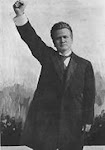School districts these days more or less live and die by these referendums in terms of their ability to sustain programs and staff,” Dan Rossmiller of the Wisconsin Association of School Boards (WASB) recently said as reported by the Isthmus.
So far in 2016, voters approved more than three-quarters of the 85 ballot referenda to raise property taxes to send more local dollars to schools. The nearly 77% pass rate is much higher than a few years ago.
People are voting to raise property taxes to keep their schools alive.
Recently I met with officials from the Department of Public Instruction (DPI) to understand school funding trends. I learned there was a big shift in the success of referenda. Prior to 2011 (and the deep school cuts that year) about half of school referenda passed. In the past five years about two-thirds passed.
Historically, communities voted to raise school property taxes to build buildings. Prior to 2011, nearly two-thirds of referenda votes were for the purpose of raising debt for building projects.
After 2011, over half of the votes to raise school property taxes are to fund current educational costs. But there is a limit to how much people can raise their property taxes to pay for current operations.
Back in 2012, the community of Gilmanton raised the school portion of their property taxes by over 40% to keep their beloved school alive. After the vote, many constituents told me “voters will never again” be able to afford such an increase in property taxes.
At a recent legislative breakfast, local school officials pleaded with lawmakers to increase state aid. School officials spoke of local “referenda fatigue” meaning people just can’t afford to raise their property taxes even though they want to keep the school district afloat.
Superintendent Dr. Connie Biedron reviewed the different ways the state cut funds to schools: cuts in state aid, local school districts paying for Milwaukee charter schools, local school districts paying for private school vouchers.
“I’m so grateful people are supporting schools by passing the referendum, but we are facing a continual decline in state funding”, said Dr. Biedron, “Communities can’t continue to tax more. They just can’t support taxing more.”
Prescott is a community that recently voted down a referendum for “existing educational programs and staff”. The February loss means the district is facing cuts of nearly 10% of its budget.
Just over river from Prescott, in Minnesota, voters do not face the same harsh realities of raising property taxes or facing deep cuts to schools.
Minnesota funds about two-thirds of school budgets with state aid. Only 30% comes from local sources like property taxes. Todd Langenfeld, a Prescott resident active in the referenda discussion, told me, “Wisconsin made a commitment to fund schools with two-thirds state funding. But we are well below that.”
The state of Wisconsin contributes about 45% (compared to Minnesota’s 64%) of the cost of schools, while locals contribute almost half.
Mr. Langenfeld continued, “To make up the difference, Prescott goes to referendum. If the state kicked in more, people would pay less in taxes.”
When the state pays less, people face awful choices; raise property taxes just to stay even with the cost of educating children or keep property taxes the same and cut children’s educational opportunities.
For Prescott, state funding this year covers about 53% of students’ costs. But two years ago, the state aid covered about 55% of the school district budget. Given rising costs and the expiration of a “non-recurring” referendum (renewed since 1999), it is not surprising voters faced a hard choice.
Prescott voters will get another opportunity to support their schools on May 25, 2016 when a special election will be held on another referendum. This time voters will be asked to make permanent (or recurring) the expiring referendum.
The immediate lay-off of teachers, cuts in student activities, canceling bus routes, and closing buildings may be averted with the passage of the May referendum.
However, voters all around the state must solve long-term problems by electing a Legislature willing to tackle the tough questions of how to increase permanently the state share of money for our children’s education.
Madison Office
108 South, State Capitol
(608) 266-8546
108 South, State Capitol
(608) 266-8546
Mailing Address
PO Box 7882
Madison, WI 53707-7882
PO Box 7882
Madison, WI 53707-7882














No comments:
Post a Comment